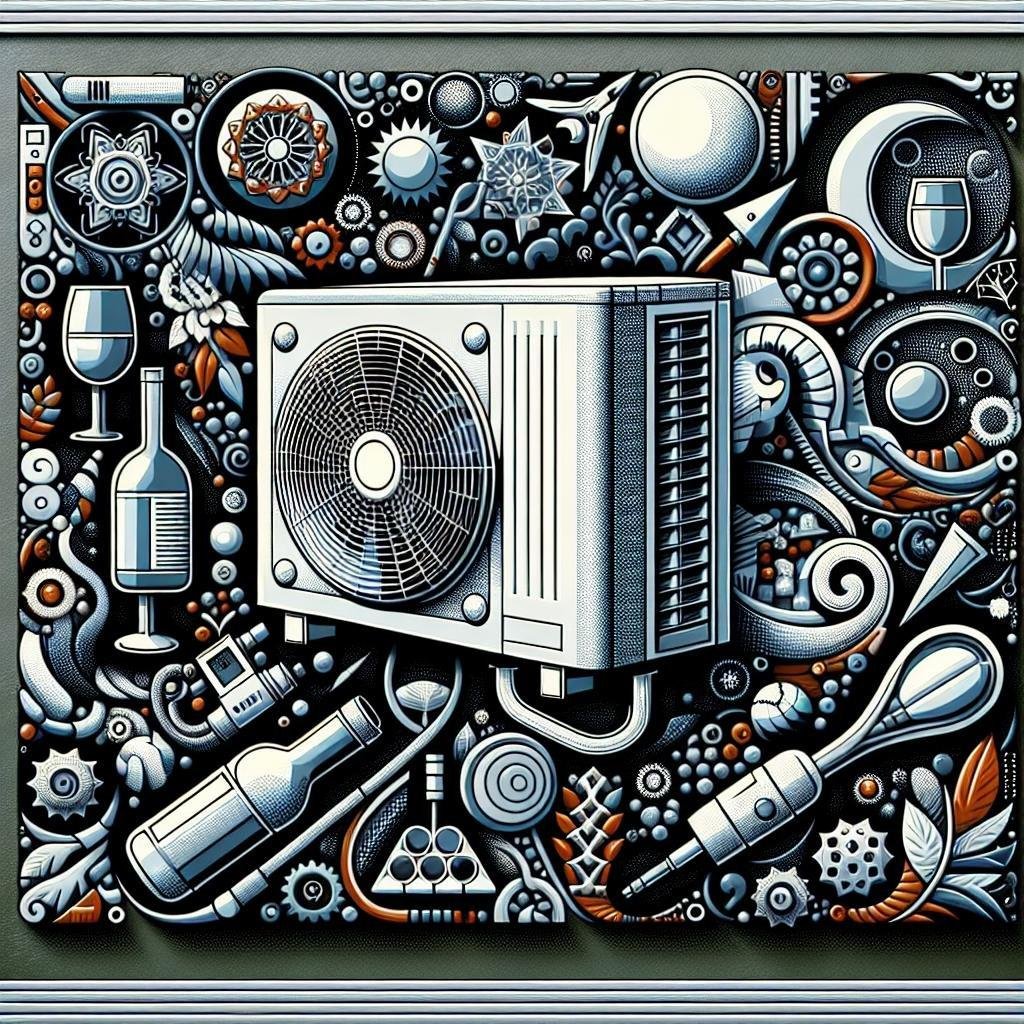Can a mini split AC be installed in a wine cellar?

Picture this: you’ve finally built that dream wine cellar,each bottle carefully selected and perfectly arranged. But there’s one niggling question keeping you up at night – how to maintain that perfect temperature without compromising your cellar’s aesthetic or breaking the bank? Enter the mini split AC system, a solution that’s been turning heads in the world of wine storage.Let’s uncork the possibilities and discover if these sleek cooling systems can indeed be the guardian of your precious vintages.
Climate Considerations and Optimal Cooling for Your Wine Collection
Wine enthusiasts know that maintaining the perfect habitat for their precious bottles involves more than just storing them in a dark corner. The delicate balance of temperature and humidity plays a crucial role in preserving your wine’s quality and aging potential. While traditional cellars rely on natural cooling methods, modern solutions like mini-split systems can create an ideal microclimate that keeps your collection in pristine condition. The key factors to monitor include a consistent temperature between 55-58°F (13-14°C) and relative humidity levels of 60-70%.
Your collection’s specific requirements may vary based on the types of wine you store. Red wines generally fare better at slightly warmer temperatures than whites, while sparkling wines prefer the coolest spots in your cellar. Consider these essential factors when planning your cooling strategy:
- Thermal load calculations for your space
- Insulation requirements and vapor barriers
- Air circulation patterns and ventilation needs
- Temperature zoning capabilities
| Wine Type | Ideal Temperature | Humidity Range |
|---|---|---|
| Red Wine | 55-65°F | 60-65% |
| White Wine | 45-55°F | 65-70% |
| Sparkling | 40-50°F | 70-75% |
Essential Components and Installation Requirements for a Mini Split in Your Wine Haven
Building your personal wine sanctuary requires careful consideration of various components to ensure proper climate control. A ductless mini-split system consists of an outdoor condenser unit connected to an indoor air handler through a small conduit.The installation demands a dedicated electrical circuit, typically 220V, and proper placement of both units to maximize efficiency. You’ll also need a condensate drain line, refrigerant lines, and mounting brackets for secure installation.
Your wine cellar’s mini-split setup should include these essential elements:
- Wall-mounted indoor unit with precise temperature controls
- Exterior condenser with proper clearance and ventilation
- Line hide covers for aesthetic appeal
- Vibration-dampening mounting pads
- Digital thermometer and humidity sensor
| Component | Purpose |
|---|---|
| Line Set | Connects indoor and outdoor units |
| Drain Kit | Removes excess moisture |
| Control Unit | Manages temperature settings |
Space Management and Strategic Placement to Maximize Cooling Efficiency
The art of positioning your mini split system in a wine cellar requires careful consideration to achieve optimal cooling performance. Strategic placement of both indoor and outdoor units plays a crucial role in maintaining consistent temperatures throughout your collection. By installing the indoor unit on the longest wall, preferably opposite the entrance, you create a natural airflow pattern that envelops your wine bottles in a protective cocoon of cool air. Remember to keep a minimum clearance of 6 inches from the ceiling and maintain proper spacing between wine racks to promote unrestricted air circulation.
Transform your cellar layout into a cooling masterpiece by implementing these smart placement strategies:
- Position taller wine racks along perimeter walls
- Create strategic pathways for air distribution
- Keep heat-generating equipment away from temperature sensors
- Install reflective materials on sun-exposed walls
- Use well-sealed doors and windows to prevent thermal leaks
| Unit Location | Cooling Impact |
|---|---|
| High Wall Mount | Superior air distribution |
| Center position | Balanced temperature |
| Corner Install | Limited coverage |
Expert tips and Best Practices for Wine Cellar Mini Split Success
Achieving the perfect environment for your precious wine collection requires more than just installing any cooling system. To maximize your mini split’s performance in a wine cellar setting, start by selecting a unit with humidity control capabilities and opt for a wall-mounted indoor unit to ensure optimal air circulation. position the evaporator away from direct wine bottle contact and maintain a consistent temperature between 55-58°F (13-14°C) for red wines and slightly cooler for whites.
- Install a moisture barrier behind walls and ceiling
- Use insulation with minimum R-19 rating
- Place temperature sensors at bottle height
- Consider a backup power solution
- Schedule bi-annual maintenance checks
The success of your wine cellar’s climate control largely depends on proper installation and regular maintenance. Monitor condensation levels and ensure proper drainage to prevent unwanted moisture buildup. Many collectors overlook the importance of door seals and thresholds – these seemingly minor details can substantially impact your mini split’s efficiency and your wine’s aging process. Remember to periodically check for air leaks around windows, doors, and electrical outlets, as these can force your system to work harder than necessary.
| Parameter | Ideal Range | Risk Level |
|---|---|---|
| Humidity | 60-70% | High |
| Temperature Fluctuation | ±2°F | Medium |
| Air Exchange | 4x per hour | Low |
Q&A
Q&A: Can a Mini Split AC Be Installed in a Wine Cellar?
Q1: so, what exactly is a mini-split AC?
A1: Great question! A mini-split AC is a type of air conditioning system that consists of an outdoor compressor unit and one or more indoor air-handling units. They’re known for their energy efficiency and ability to cool specific zones or rooms without the need for ductwork. Perfect for areas that need individualized temperature control-like a cozy wine cellar!
Q2: Why would I consider installing a mini-split in my wine cellar?
A2: well, wine is quite particular about its environment! It thrives in cooler temperatures, usually between 50°F and 55°F (10°C to 13°C). A mini-split can help maintain that ideal range while ensuring humidity stays balanced, thus protecting your precious bottles from spoilage. Plus, it’s super quiet, so you can sip in peace without the hum of a loud fan!
Q3: Can any mini-split be suitable for a wine cellar?
A3: not all mini-splits are created equal! Look for models specifically designed for low-temperature environments.These units generally have features that allow them to cool efficiently without overworking or freezing up. It’s like finding that perfect bottle to complement your favorite meal-go for quality that suits the task!
Q4: what are the benefits of a mini-split over traditional AC units for a wine cellar?
A4: Besides their energy efficiency, mini-splits are compact and can be installed in tight spaces-ideal for those basements or tucked-away corners filled with your prized vintages.Plus, they often come with ductless technology, meaning you won’t have to cut into those lovely wine rack designs to accommodate ductwork. Your wines-and decor!-thank you!
Q5: Is installation elaborate?
A5: It can be a bit of a project, but it’s nothing a skilled HVAC technician can’t handle! The installation typically involves placing the indoor and outdoor units, connecting the refrigerant lines, and ensuring proper drainage. Make sure to choose a pro who understands the unique needs of wine cellars, and you’ll be sipping in your climate-controlled haven in no time!
Q6: What about maintenance? Do I need to worry?
A6: Like any other cooling system, mini-splits need a little TLC! Regular filter changes and annual inspections will keep your unit running smoothly. Trust us, maintaining your system is a lot easier than dealing with ruined wine. A small effort for big rewards!
Q7: Any final tips for wine cellar enthusiasts?
A7: Absolutely! When setting up your mini-split, consider adding insulation and proper sealing to keep the cool air in and the heat out. And don’t forget to monitor humidity levels-ideally, you want them to sit between 50% and 70% for that perfect wine storage environment. Cheers to your beautifully climate-controlled wine cellar!
Weather you’re a casual sipper or a devoted connoisseur, a mini-split AC can be the perfect addition to your wine cellar, ensuring every bottle is kept at its best. Happy cooling! 🍷
key Takeaways
As we wrap up our exploration of whether a mini split AC can find its home in your beloved wine cellar, it’s clear that this versatile cooling solution can indeed enhance your wine storage experience. By efficiently regulating temperature and humidity levels, a mini split AC ensures your prized vintages are preserved in optimal conditions, allowing you to savor every sip to its fullest.
Whether you’re clutching a bottle of robust Cabernet or a delicate Chardonnay, the right climate truly makes all the difference.So, if you’re ready to raise a toast to the idea of a well-cooled wine cellar, consider the mini split AC as your trusty companion in this delightful journey. With a little planning and consideration,you’ll protect your investments and indulge in the joy of every bottle for years to come. Cheers to fine wine and the perfect environment to enjoy it!






















